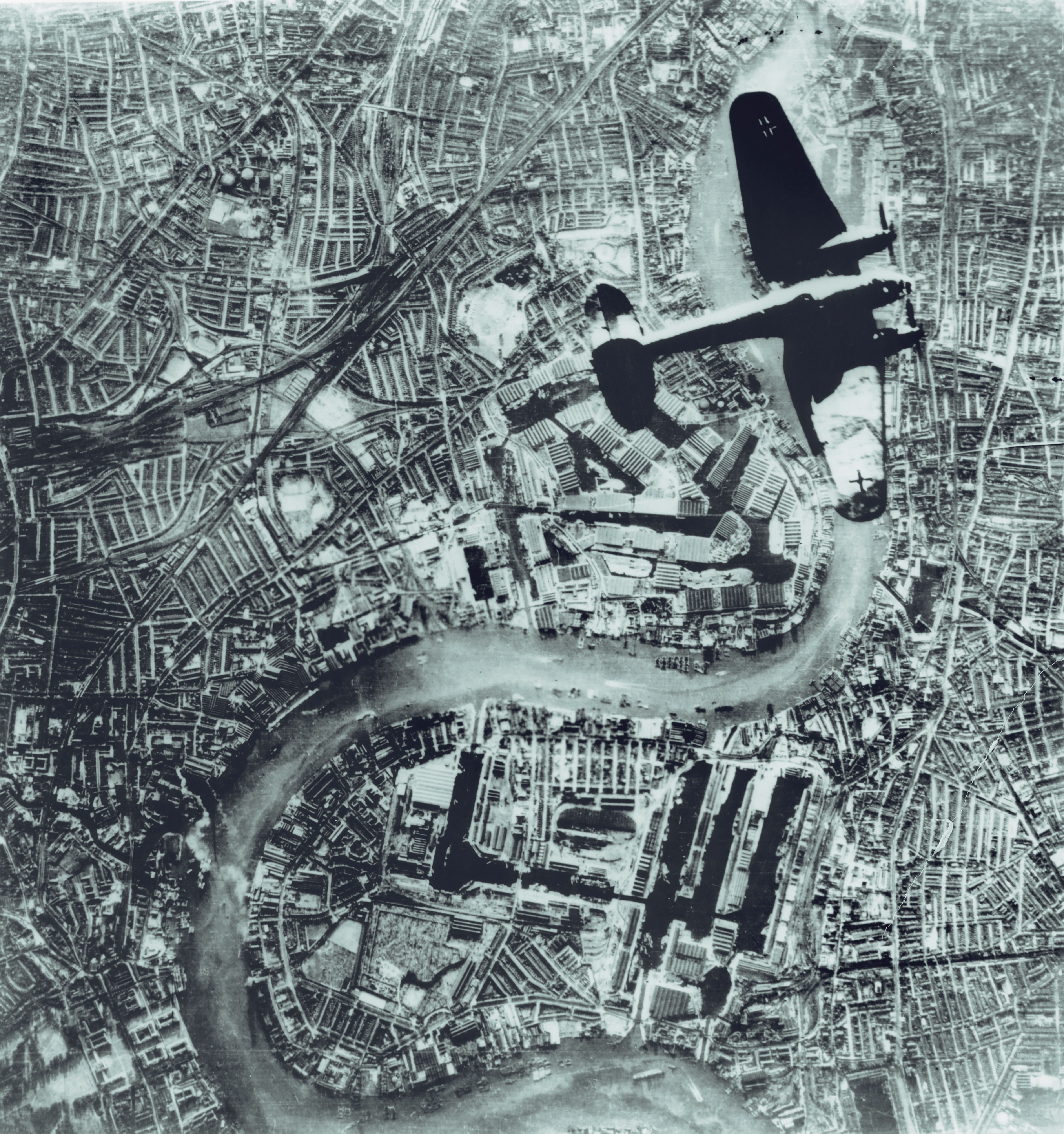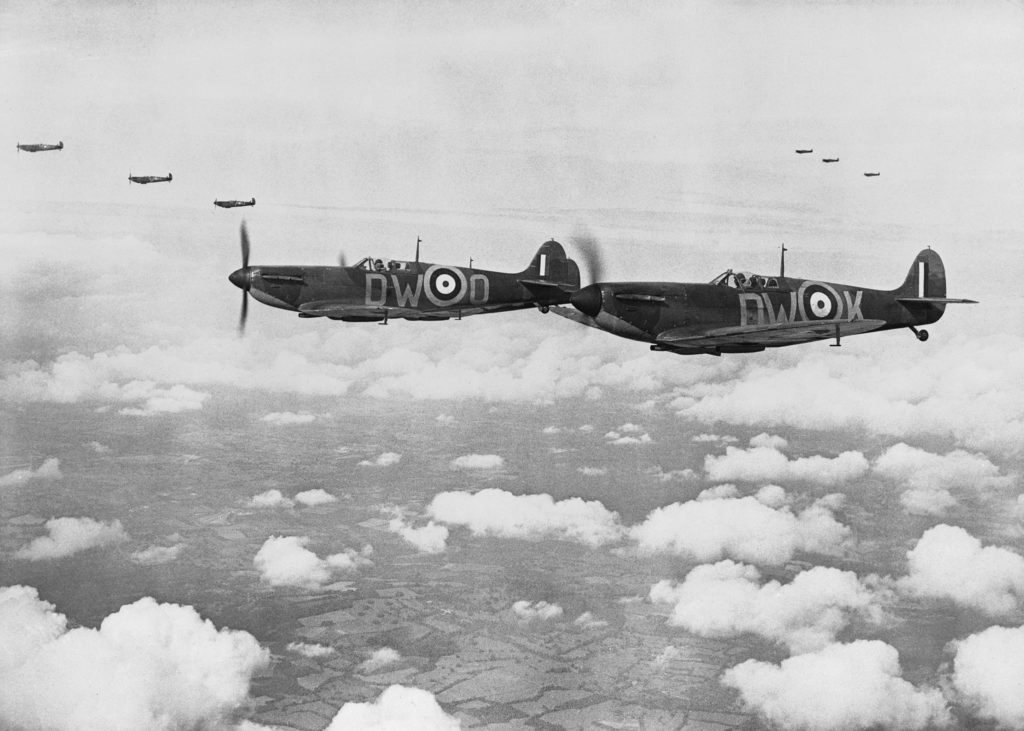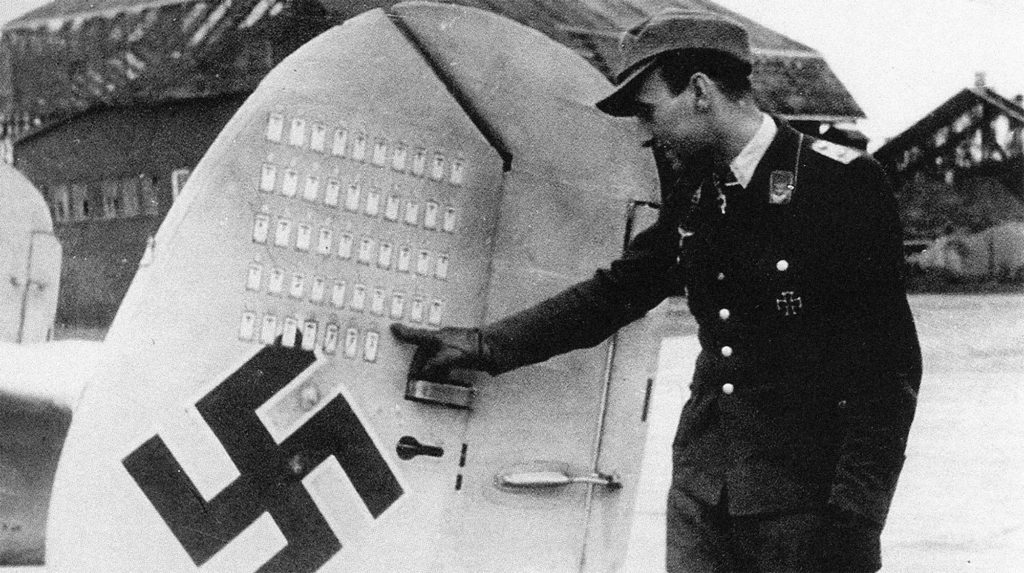ON THE NIGHT of August 23, 1940, a young British scientist sat with his wife watching German bombers attack the English city of Birmingham, about 20 miles from the village where the couple was taking a brief vacation. Reginald V. Jones was not so much interested in what he could see as in something he couldn’t. He knew that German pilots were using a secret weapon—a new technology that allowed them to find their targets in the dark.
Recommended for you
The weapon had the potential to give the Luftwaffe a decisive advantage. Pilots in those days navigated by what they could see: the ground in daylight and the stars at night. This made accurate bombing in darkness impossible. It wasn’t a matter of finding the right buildings; aircrews struggled to find the right city or even the right country. In May 1940, a Royal Air Force bomber on a mission to attack an airfield in Holland got lost in a storm and instead bombed an RAF base in southern England. (The unlucky pilot, a Captain Warren, was known to comrades thereafter as “Baron Von Warren.”)
In the summer of 1940, with Germany occupying mainland Europe and Britain cornered, the difficulty of finding targets in the dark worked in the defenders’ favor. German bombers flew most of their missions during the day, making them vulnerable to the RAF’s Spitfire and Hurricane fighters. But bombers that could find their way at night would be safe from the fighters, which had no way of locating them.
Jones’s job was to stop that from happening. He worked for Britain’s foreign intelligence service, MI6, as a scientific analyst. Since the start of the year, he had been playing detective, trying to piece together clues about a secret German air weapon. What was it—and could it be stopped?
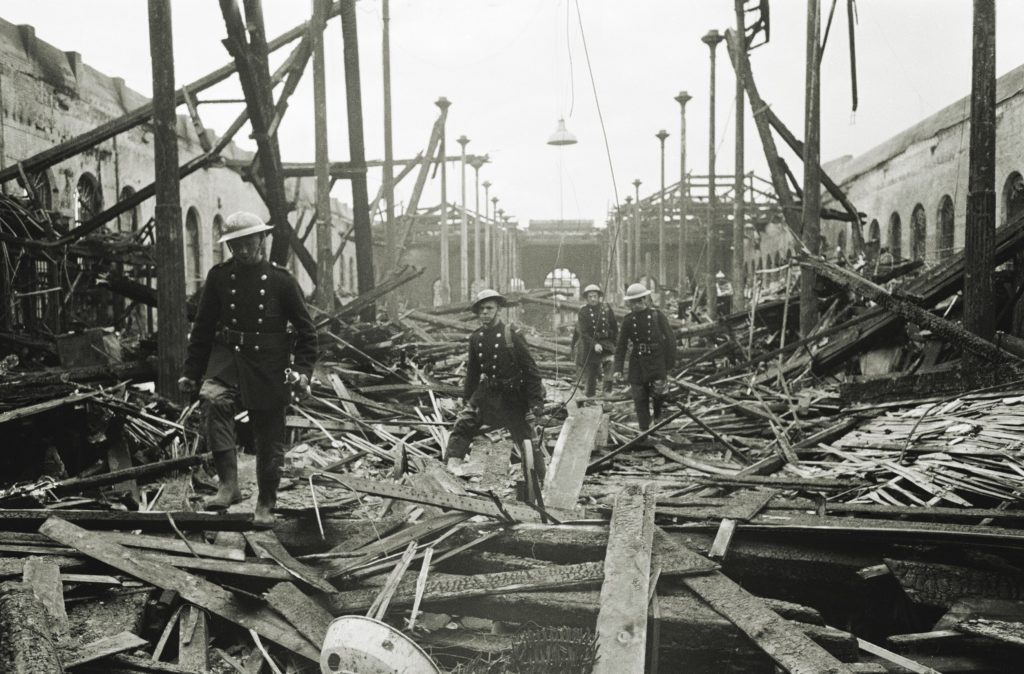
Messages in the Dark
When Jones had been recruited at age 27, just as war broke out in 1939, he had been handed an anonymous report sent to the British Embassy in Oslo by someone claiming to be a German anti-Nazi. It described various technologies the Nazis were working on, including one for using a radio signal to measure a friendly airplane’s distance from a transmitter. With nothing else to go on, Jones had filed it away and moved his attention to reports from the interrogations of downed German aircrews.
The prisoners didn’t realize that their cells had been bugged and that Denys Felkin, the intelligence officer in charge of questioning them, was most interested in what the men said when they thought they were alone. One captured pilot had discussed a Luftwaffe secret known as the “X-Device,” telling a colleague: “It has to do with dropping bombs on an unseen target.” Jones set out to figure out what this X-Device might be. A bomber guidance system, he realized, was likely to involve the revolutionary technology that had attracted him to science as a teenager: radio. The period between the wars had been an exciting time for amateur physicists, building their own crystal sets and seeing who could pick up the most distant signals.
In Germany, another young man had been similarly inspired. Born in 1900, Johannes “Hans” Plendl, the son of a Munich grocer, had been just old enough to serve as a naval wireless operator at the end of World War I. While at university he had become interested in radio propagation—how radio waves travel. The Nazis’ rise proved a boost for Plendl: they saw an air force as crucial to Germany’s future, and provided ample funding for research. In the late 1930s, Plendl turned to the question of whether radio signals could be used to guide a bomber.
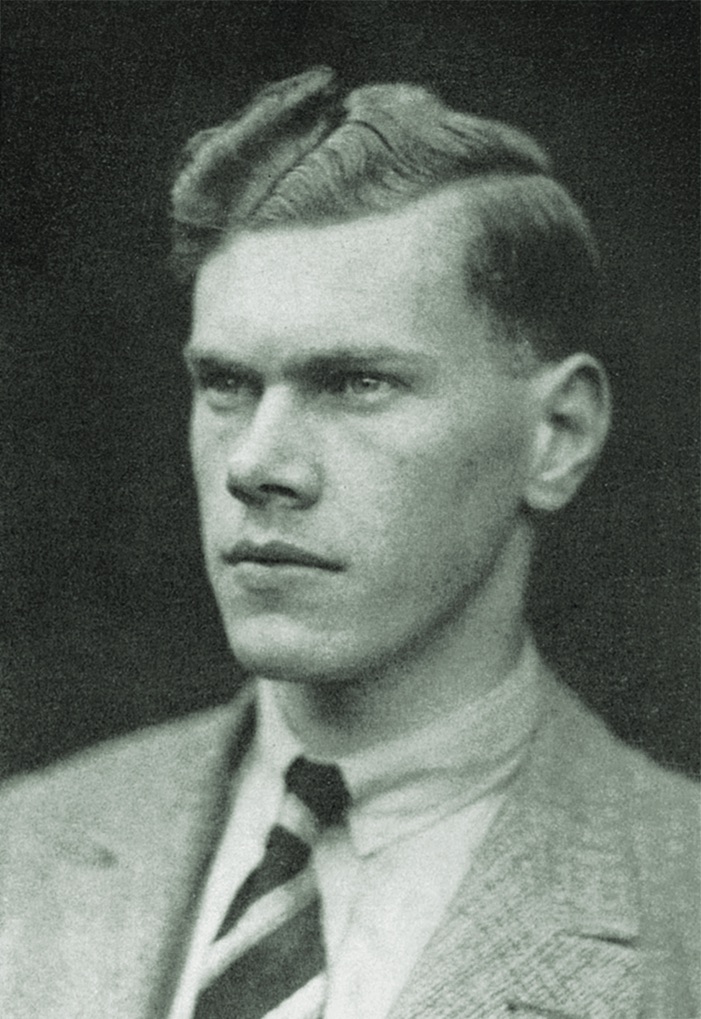
The X-Device
Radio beacons were already used for airplane navigation. Because the beacon’s locations were known, an airplane’s navigator could take a bearing on them to determine the plane’s position. Plendl had a different idea, and when Germany invaded Poland, some of its bombers were carrying the X-Device he had designed.
Jones was unaware of that, though. In early 1940 he continued to collect clues. In April a Spitfire shot down a German airman carrying a scrap of paper that read: “Radio Beacon Knickebein from 0600 hours on 315 degrees.” That seemed odd. Three hundred fifteen degrees would be northwest, but a plane flying from Germany to Britain would look south or east for a navigational beacon. And a navigational beacon wouldn’t have a fixed bearing, as this note seemed to suggest. Could it be that the beacon codenamed “Knickebein” was sending a signal in a single direction—a radio beam?
That, Jones reasoned, would make sense. A plane would fly along one beam and then drop its bombs when it crossed another one. Perhaps that was the “X” in “X-Device.” Depending on how wide the beams were, a system like that would deliver far greater precision than anything the RAF had. It would work at night and in any weather conditions.
But at this point it was just a theory. Jones’s masters were unimpressed. The RAF insisted, in the face of their own experience, that such navigational aids were unnecessary for bombing. He needed more clues.
Mysterious coordinates
HE WOULD GET ONE IN JUNE. A baffled RAF officer consulted him about a decrypted Luftwaffe message that read: “Cleves Knickebein is confirmed at position 53 degrees, 24 minutes north and 1 degree west.”
Those were the coordinates of Retford, a town in central England. On reading the message the previous day, an energized RAF team had rushed up there, hoping to find a team of German spies. Having come back empty-handed, they hoped Jones might be able to help. He could. The town of Cleves was one of the closest places in Germany to Britain. Jones guessed that a broadcast from a transmitter there must have been picked up by a Luftwaffe plane over Retford, probably as the Germans tested their signal.
He went back to Denys Felkin, who drew his attention to something a captured mechanic had said months earlier after being questioned about the X-Device. Back in his room, the man had laughed to another airman: “They’ll never find it out. They can try it out and examine it as much as they like. It is a sort of apparatus that they will never find out.”
Here, Jones and Felkin would enjoy two extraordinary strokes of luck, both based on misunderstandings. First, they misinterpreted the airman’s meaning. Jones, retelling the story years later, would describe the mechanic saying: “They’ll never find it! They’ll never find it!” He took that to mean that the equipment was hidden in German planes in a way that meant the British wouldn’t be able to spot it. But the airman hadn’t meant that: he’d meant that no one looking at Plendl’s X-Device would be able to figure out what it was for.
Second, Jones assumed that Knickebein and the X-Device were the same thing. In fact, the Luftwaffe was operating two beam navigation systems: Plendl’s X-Device and a cruder system, Knickebein.
Such misunderstandings, whether in science or intelligence, are usually bad news. This time, however, they would help Jones to a breakthrough. He concluded that the X-Device was somewhere on the German planes but disguised as something else. He loved puzzles and challenges, and now the Luftwaffe had provided him one.
collecting clues
A few months earlier, the British had captured a largely intact German Heinkel He 111 bomber. Jones pulled out the report on it and looked at the list of radio equipment found onboard. It included a blind-landing receiver—designed to guide pilots to the runway in darkness or bad weather.
Blind-landing was a short-range technology that used two transmitters, on either side of the runway, to broadcast alternately on the same frequency (see diagram at left). A pilot would hear short tones from one transmitter if he were to the left of the runway, and long tones from the other if he were to the right. If he were lined up with the runway, he heard a solid tone. Effectively, a blind-landing system created a radio beam. What if the Germans had found a way to extend the range?
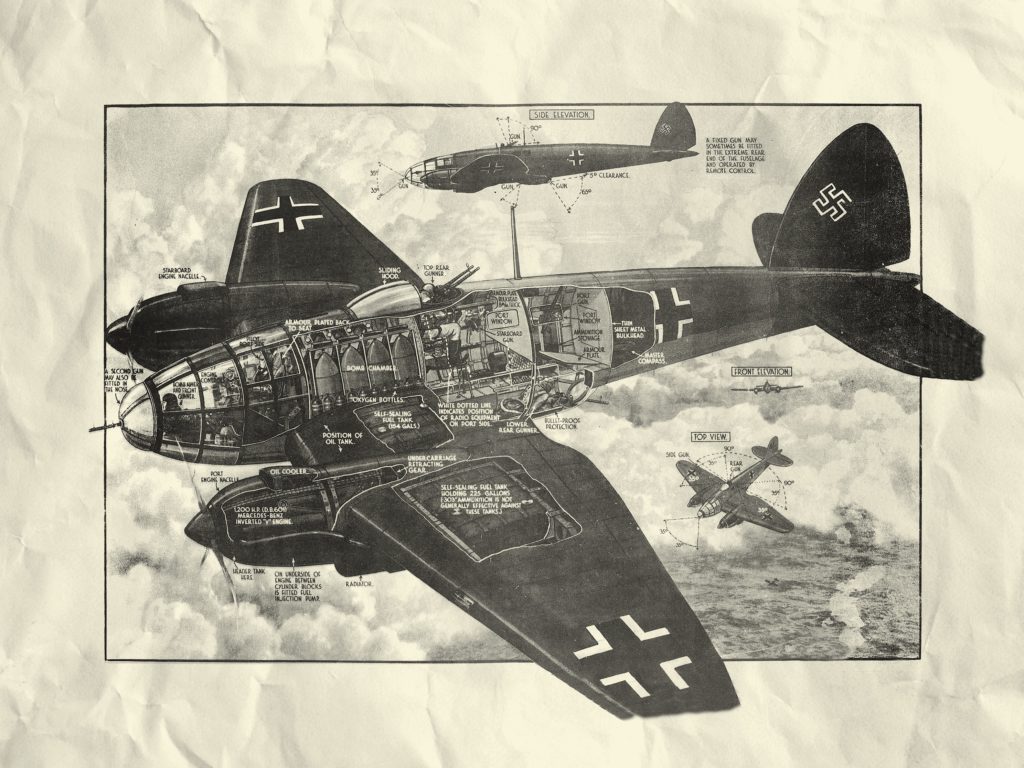
Jones called the engineer who had examined the Heinkel. Had there been anything unusual about the blind-landing gear? he asked. “Now you mention it,” came the reply, “it is much more sensitive than you would ever need.”
That was Jones’s eureka moment. More sensitive receivers, combined with more powerful transmitters, meant a signal could be picked up much farther away than anyone in Britain thought possible: a blind-landing beam was usually about 30 miles long, but Retford was 300 miles from Cleves.
Toward the end of June, Jones was summoned to 10 Downing Street to brief Winston Churchill. The prime minister later described hearing the news that Luftwaffe pilots could navigate in the dark as “one of the blackest moments of the war.” Britain faced the prospect of accurate bombing, night after night, until it was defeated. What could be done?, Churchill asked.
Jones replied that if the radio beams could be found, it might be possible to jam them. The mission now was to find them.
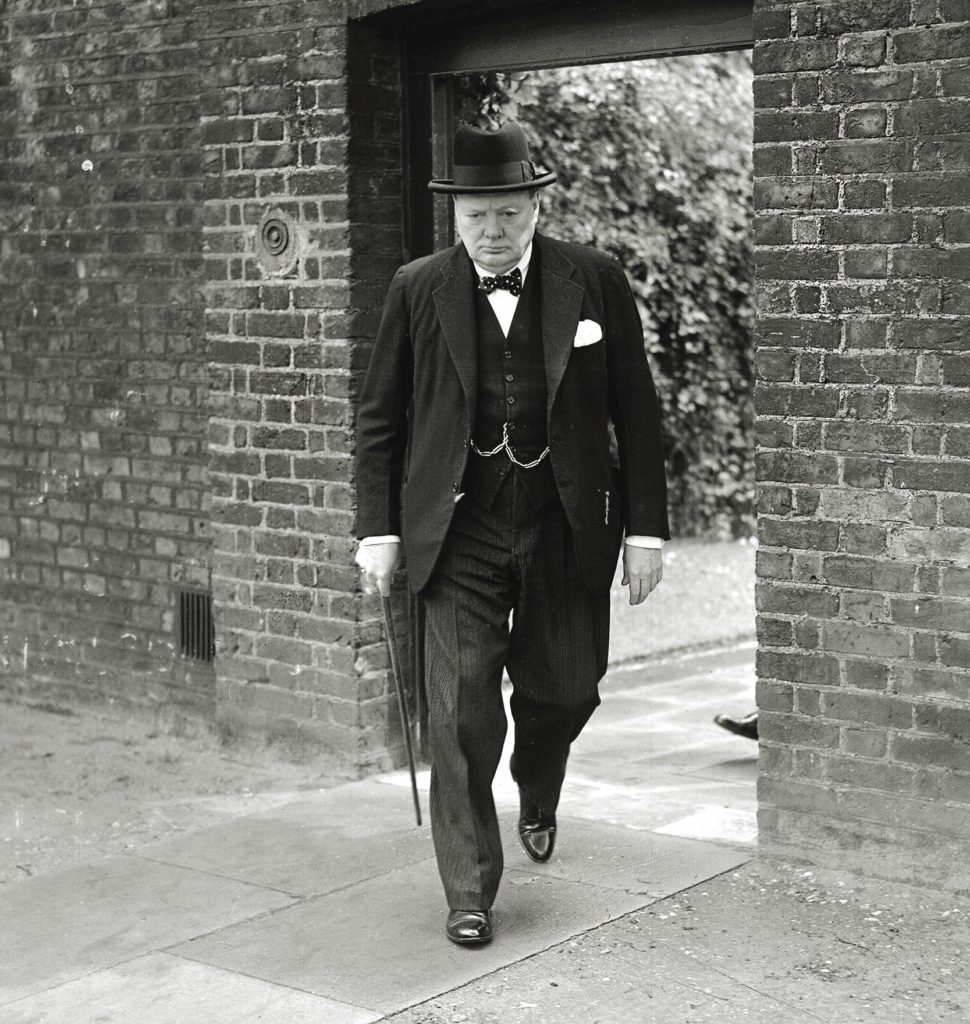
‘Good, clear signals’
THAT NIGHT AN RAF PILOT, sent up to hunt for the beams Jones had described, found them quickly. They were aimed at the factory in central England where Rolls-Royce made its Merlin engines for Spitfires and Hurricanes. “Good, clear signals,” he reported—a beam that was just 500 yards across.
Jones reflected later that one of the Luftwaffe’s mistakes was transmitting test signals like this before they were ready to start using them. Had they waited until the start of their bombing campaign against Britain to turn them on, Jones and his colleagues might never have had time to develop countermeasures.
The RAF gave the beams a codename, “Headache,” and another young physicist, Robert Cockburn, was given the job of finding how to jam them. He built transmitters—aptly codenamed “Aspirin”—to mimic the beam signal and be activated when beams were detected.
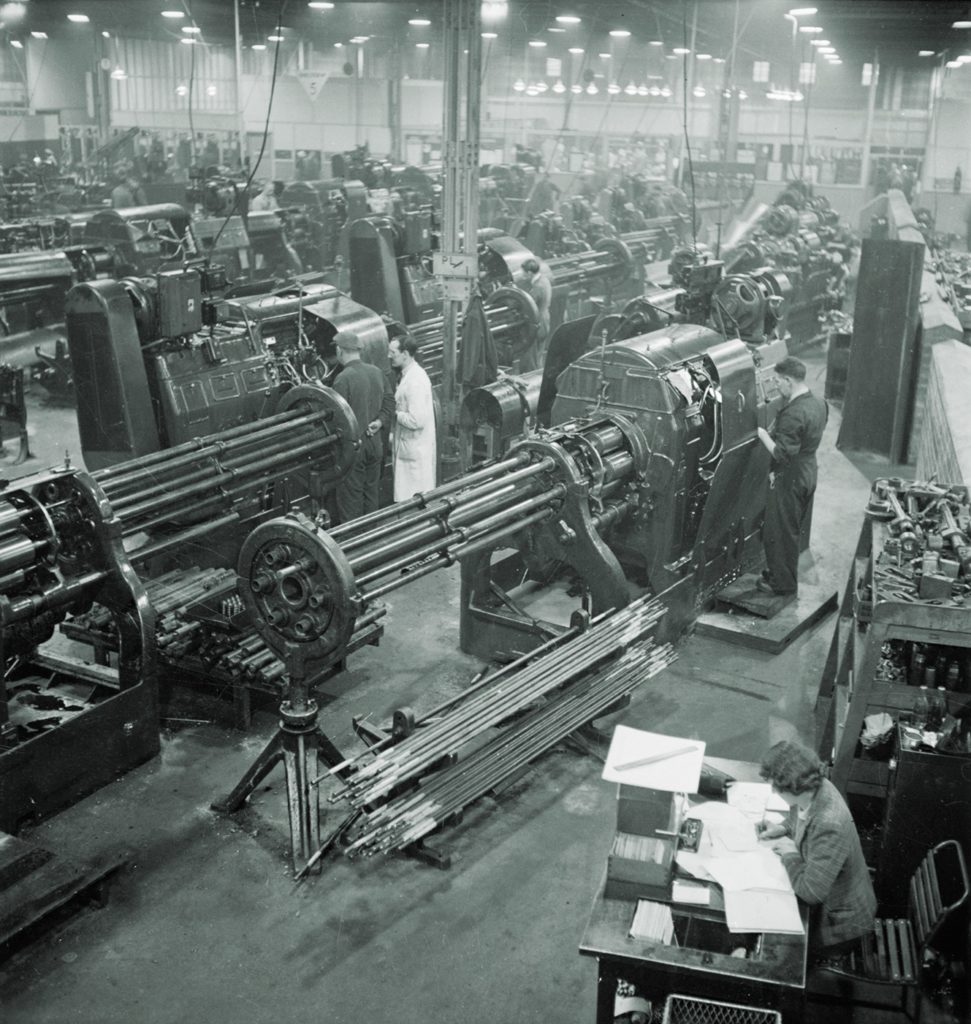
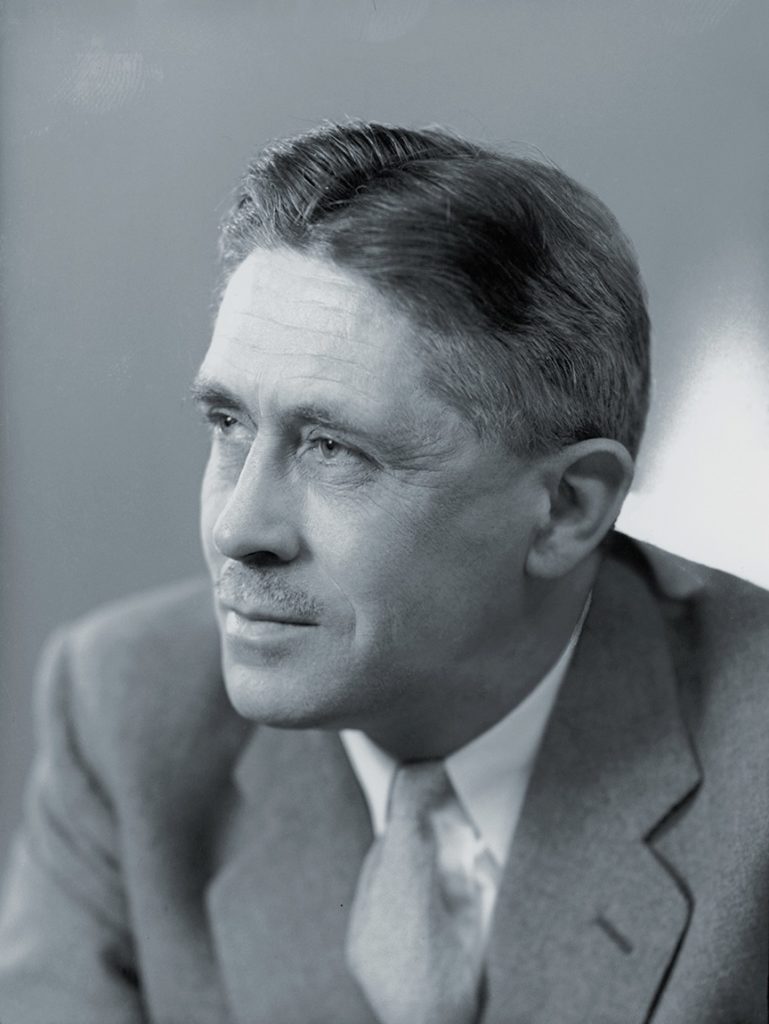
To do that detection—and warn of coming attacks—the British built a network of monitoring stations. Given the situation’s seriousness, these stations had a comic feel to them. Tiny wooden sheds were lashed to the top of the 300-foot radar masts that already lined the coast. Inside were radio receivers manned by former amateur radio hobbyists, who knew how to make the most of their equipment, rigging antennae using broomsticks. They would sit there all night, listening for the Knickebein signals, while RAF aircraft searched for the signals overhead. Once a signal was found, the jammers could be turned on.
And then, abruptly, the beams disappeared. Throughout July, no signals could be found. The only night alarm in London that month was caused by an RAF plane searching for Knickebein signals. Senior officers, who found the young Jones arrogant and quite lacking in respect, questioned whether the whole excitement over beams had been a nine-day wonder.
Confident in Berlin
In fact the Luftwaffe, content that its Knickebein system worked, had turned it off until they were ready to use it. This gave Cockburn badly needed time to get his countermeasures systems working. By the time the Luftwaffe was ready to attack Britain in force, in mid-August 1940, Cockburn’s Aspirins were waiting. He had other tricks up his sleeve, too: receivers nicknamed “meacons” picked up broadcasts from Germany’s ordinary navigational beacons and then retransmitted them on the same frequency, confusing the Luftwaffe’s wayfinding equipment.
German aircrews discovered that they began to have trouble finding their navigation beacons’ signals as they crossed the Channel each night. Sometimes the signals were strong, but coming from the wrong direction, and other times the beacons seemed to be moving around, as the German radio equipment confused the genuine beacon with the British “meacon.” As for Knickebein, it simply wasn’t working. Sometimes the aircrews couldn’t pick the signal up. Sometimes they found it, but it wasn’t taking them where it was supposed to. A rumor began spreading that the British had found a way of bending the Knickebein beams—something that, though theoretically possible, was beyond the capability of British technicians.
But despite the British success in countering Knickebein, the scientific battle wasn’t all going one way. Jones believed that Knickebein and X-Device were parts of the same system. In reality, only the first was being countered. The second, more sophisticated, system was working very well, completely untroubled by the British. Jones didn’t know it, but he watched it in action as the Germans attacked Birmingham that August night.
Whereas Knickebein relied on a souped-up version of blind-landing equipment that pilots were already familiar with, the X-Device needed to be separately installed in the airplanes and crews had to be trained to use it. An elite bomber unit, Kampfgruppe 100 (KGr 100), had been working with the system since the start of the war, and had now set up a base in northern France. They called themselves Vikings and, like their namesakes, they were going to set England on fire.
KGr 100 targeted British factories at night. It was safe work: the squadron dropped 156 tons of bombs that August, and just two members of the unit were injured. Only one plane reported damage from enemy fire.
Realizing that the X-Device was still working, the Luftwaffe decided to switch strategies. The Vikings were now ordered to become the first-ever “pathfinder” unit, flying ahead of the main attacking force and marking targets with incendiaries for their comrades to then hit.
Some RAF officers, continuing to misread the situation, thought that in dropping incendiaries, Luftwaffe aircraft must be navigating by sight and attempting to illuminate targets. But Jones was worried. At the end of August, Britain’s radio listening service had reported picking up signals on a wavelength previously unused by the Luftwaffe. And intercepted messages referred to “installing” the X-Device on airplanes in a way that told him he had been wrong to conflate it with Knickebein.
GET HISTORY’S GREATEST TALES—RIGHT IN YOUR INBOX
Subscribe to our HistoryNet Now! newsletter for the best of the past, delivered every Monday and Thursday.
A harsh bromide
Throughout September, he pieced together more clues. The RAF assigned the X-Device its own codename, “Ruffian,” and told Cockburn to come up with a more powerful “Aspirin”: he called it “Bromide.” But by the end of the month, Jones had reached a dispiriting conclusion, one that he told his superiors “appeared scarcely credible”: The X-Device could place a bomber within 20 yards over London. If German radio technology was that good, Jones feared the British might not be capable of defeating it.
In October Cockburn’s Bromides began operating, and Jones’s fears initially seemed confirmed. Decrypted Luftwaffe messages showed no complaints from pilots that the X-Device was malfunctioning. Jones was, at least, clearer on how it worked.
Knickebein involved flying along one beam and dropping a bomb when the plane crossed an intersecting beam. Plendl’s X-Device used three crossbeams. The pilot would fly at a fixed altitude; crossing the first beam served as an alert. When the plane crossed the second beam, the person monitoring the device pressed a button on it to start a clock; and when the plane crossed the third beam, pushing another button started a countdown to the moment of bomb release. Plendl had designed what was effectively an onboard computer that used the travel time between the beams to determine the plane’s speed and then factored in the altitude to calculate the best moment to drop the payload.
On top of that, the X-Device was no longer at the cutting edge of radio-guided bombing. In mid-October 1940, the Luftwaffe tested Plendl’s newest system, the “Y-Device,” in action for the first time. It was a one-beam system: when the pilot found the beam and engaged the autopilot, it kept him on course. An operator on the ground tracking the plane transmitted a signal to release the bombs when it reached the target. The system would, Plendl assured his masters, eclipse even the X-Device for accuracy.
It was ironic that, despite the Y-Device’s sophistication, this was the system Jones was most prepared for: it used the distance-measuring technique set out in the Oslo memo.
pillaging vikings
FIRST, THOUGH, the Vikings of KGr 100 would have their moment to shine. On the evening of November 14, its crews clambered into their Heinkels. The night was so clear that the observers could easily see the countryside below by the moonlight. Just after
7 p.m., after 90 minutes’ flying, they dropped their bombs on the city of Coventry and turned for home.
Nearly 500 German bombers followed, using the fires started by KGr 100 as their guide. Crossing the Channel in the middle of the night, a Luftwaffe crew saw what looked like a flashlight ahead of them. They wondered if it was some new British defense. Getting closer, they realized it was their target, burning so brightly it could be seen from 100 miles away. As they approached, they could smell the fire and feel the heat from the flames.
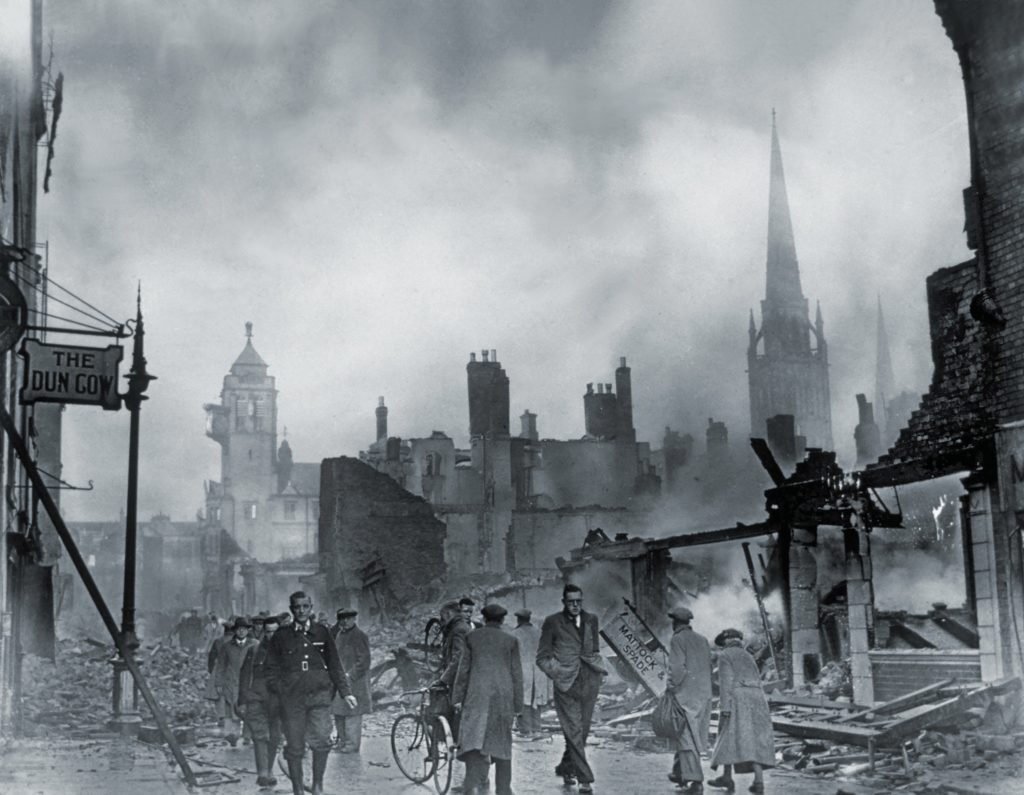
Jones was appalled by the destruction, but also baffled. He’d had enough intelligence to guess which frequency Cockburn’s Bromides should be jamming, and the Luftwaffe’s pathfinder force had passed within a few miles of two of the transmitters, which ought to have pulled them off course. But it seemed to have made no difference. He would find out the problem thanks to one of Cockburn’s other devices.
A KGr 100 bomber, its crew hopelessly confused by British jamming of German navigational beacons, ran out of fuel and landed on what they thought was a French beach, only to discover that they were still in England. The intact plane was badly damaged as the tide came in while Britain’s army and navy were arguing over who had the right to capture something that was on a beach, but eventually Jones got his hands on a water-damaged X-Device. German radio technology was more advanced than Britain’s, he found, and Cockburn’s jamming signals had been filtered out because they had been using the wrong tone. It was a problem that could be fixed.
Around this point, Jones claimed victory. Although Plendl’s Y-Device was sophisticated, the British believed it was relatively easy to confuse because it worked on the same frequency as the BBC’s television signal, which had been switched off at the start of
the war. Cockburn commandeered the BBC transmitter and began broadcasting his own Y-Device signals.
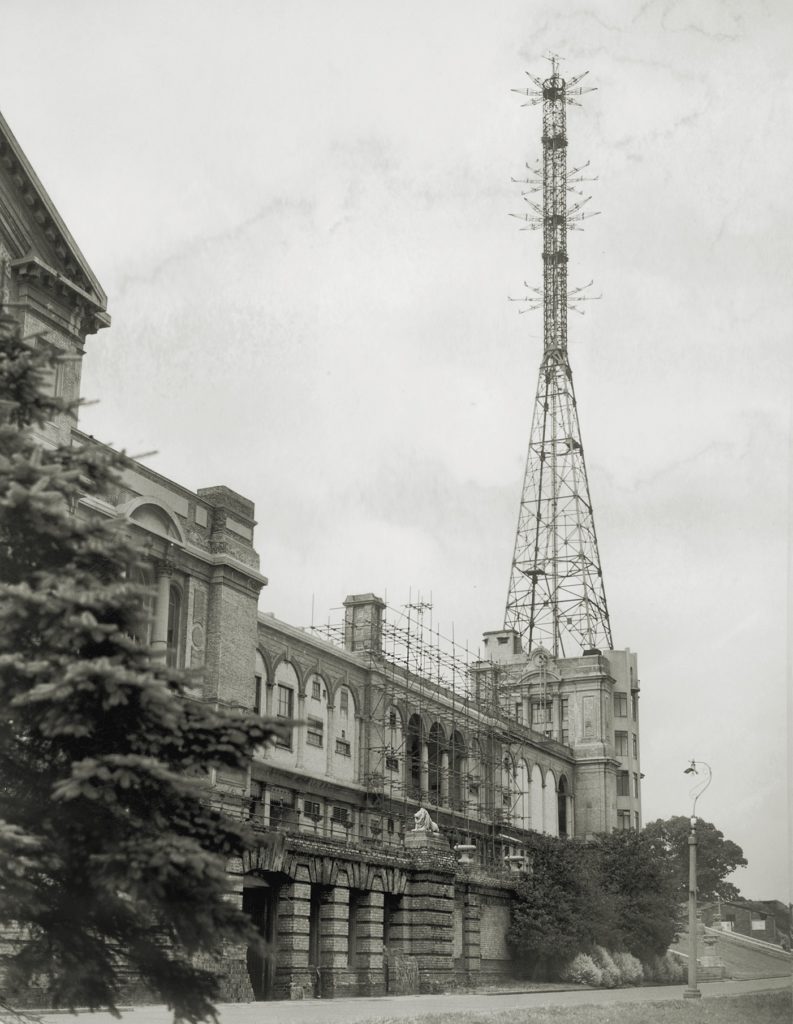
‘As Good as Won’
Jones was triumphant. By February 1941, as he later wrote, the Battle of the Beams was “as good as won.” This was an exaggeration. For all that the British understood about the workings of the beams, countering them remained a technical challenge. Some beams were successfully sabotaged some of the time, but German pathfinder units were, in the early months of 1941, still able to find their targets and lead others to them. In April, during another attack on Coventry, five of KGr 100’s 12 pathfinders were unable to find the X-Device beams. The following month, in a raid on nearby Derby, none of the Vikings could pick up the beam signal, suggesting the British were getting better at jamming.
And night-bombing of Britain was no longer a safe job. The RAF now had airborne radar. At the start of May 1941, KGr 100 was losing around one plane a night. It was also clear that Britain wouldn’t be bombed out of the war. That Coventry was a target again five months after it had become a byword for bombing destruction showed the limits of such a strategy. Adolf Hitler’s attention, in any case, was turning east. In July 1941, KGr 100 was moved to Poland.
RAF Bomber Command continued to insist that navigational aids were unnecessary. That complacency was shaken in mid-1941 when a study found that of British bombers claiming to have reached their target, only a third had dropped bombs within five miles of it. By the following year, the RAF, partly inspired by the Germans, had adopted radio navigation and pathfinders to locate its targets.
Archrivals Across the channel
ONE OF THE UNUSUAL FEATURES of the Battle of the Beams was that it helped the careers of the leading men on both sides. Both Jones and Plendl talked up their successes and may not have realized the extent of their opponent’s achievements.
Jones’s triumph was the early identification of Knickebein. His work there, and the realization that German navigation beacons were a threat, ensured that most of the Luftwaffe struggled to navigate over Britain. It is hard to know how things might have been different if every German bomber, rather than just a few elite pilots, had been able to find any city they wanted at a time when Britain had no night defenses at all. Jones had become, to Churchill, “the man who broke the bloody beam,” and he enjoyed the prime minister’s ear for the rest of the war.
Plendl wasn’t blamed for the Luftwaffe’s failure to break the RAF or to bomb Britain out of the war. He kept his senior role in the German scientific establishment. After the war he was among the Germans scooped up in the U.S. intelligence’s “Operation Paperclip,” which selected scientists to take their knowledge to America in the hope that they would assist in the coming technological race with the Soviet Union.
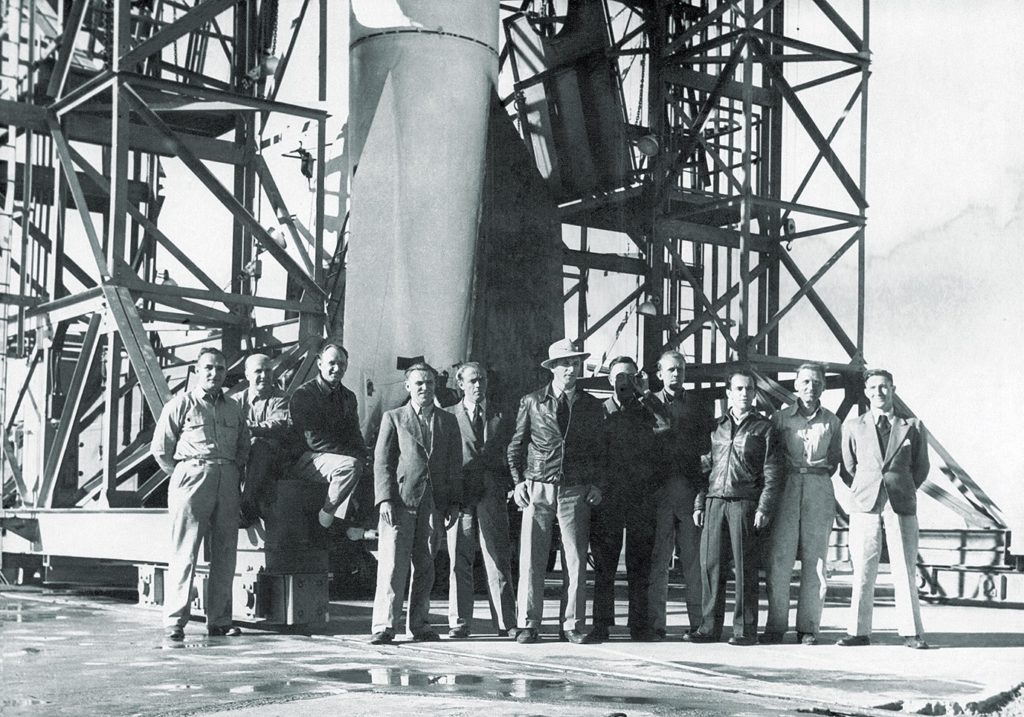
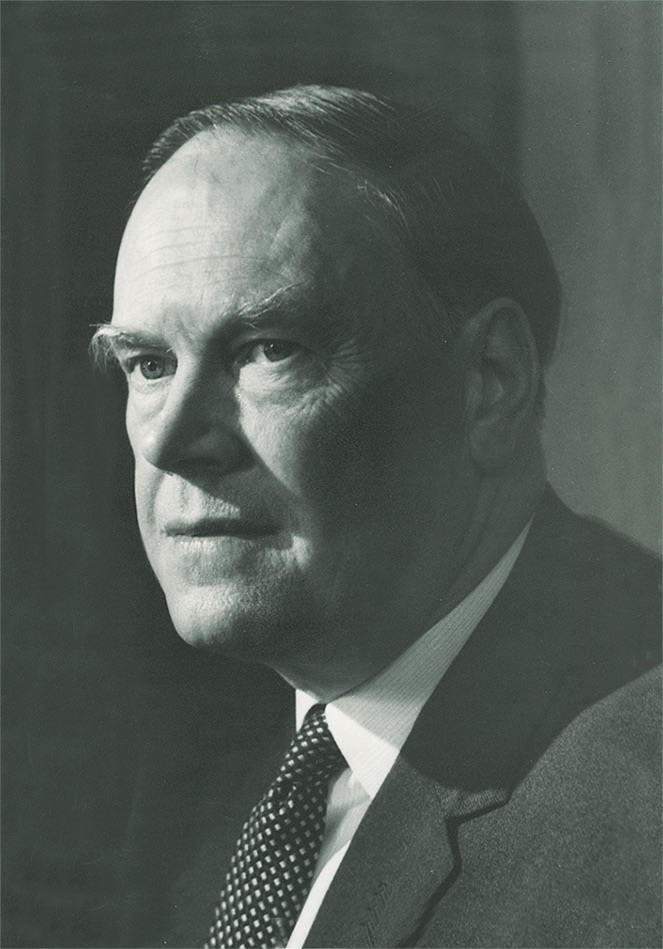
Though some of those had been senior Nazis, the Americans noted that during the war Plendl had used his position to save Jewish scientists and engineers from the death camps by insisting he needed their help with his research.
Among those he had protected was a fellow scientist, Hans Mayer, who had been arrested in 1943 for criticizing Hitler. What neither the Nazis nor Plendl knew was that Mayer was the author of the Oslo memo that had helped Jones crack Plendl’s beam. ✯
historynet magazines
Our 9 best-selling history titles feature in-depth storytelling and iconic imagery to engage and inform on the people, the wars, and the events that shaped America and the world.


